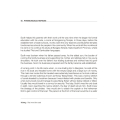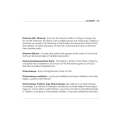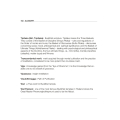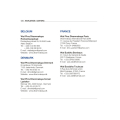abandoned temples : ค้นหาหนังสือธรรมะ หน้า 5 / 6
หน้าหนังสือทั้งหมด

177
Practicing Austerity and the Eight Precepts
observing the eight precepts, and meditating. Those who wish to practice must stay at a temple. Accommodations can depend on the geographical conditions where the temples are located and their ability
การปฏิบัติอ austerity จึงเป็นทางเลือกสำหรับผู้ที่ต้องการสร้างนิสัยแห่งความระมัดระวัง โดยการใช้ชีวิตตามแบบอย่างพระสงฆ์และการแยกแยะด้านความต้องการและความอยาก พระพุทธเจ้าได้มอบกฎใช้อาศัยในภูมิประเทศต่างก

179
Practicing Austerity in Buddhism
This is the OCR result from the image:
---
This is the way of life that our Thai ancestors inherited long ago. However, how their heritages will be revived and supported depends on one major truth:
การฝึกฝนการมีจิตใจที่ไม่เก็บความแค้นผ่านการปฏิบัติธรรมที่เรียกว่า 'อุสาหะ' หรือ 'การยอมรับความทุกข์' เป็นวิธีหนึ่งที่แนวทางของบรรพบุรุษไทยชี้ให้เห็น เพื่อคืนค่าความเชื่อมโยงในครอบครัว โดยเริ่มจากการฝึ

186
The Importance of Cleanliness in Temples
of their donations, going from 10 to 100 baht. If they had planned to donate 100 baht, they would increase the amount exponentially. Therefore, cleanliness is the most charming attribute of a temple.”
ความสะอาดเป็นคุณสมบัติที่ดึงดูดสำคัญที่สุดของวัด เมื่อผู้เข้าชมมาถึงวัดแห่งแรกที่พวกเขาสงสัยคือห้องน้ำ ดังนั้นการรักษาสถานที่ให้สะอาดจึงเป็นสิ่งสำคัญมาก การดูแลความสะอาดส่งผลต่อความสนใจของผู้บริจาคมาก

191
Understanding the Role of Monks and Media Representation
they should keep in mind that the Sangha Council has jurisdiction over a monk’s case. When a final judgment is made, people should not criticize or comment on it. If people do, in Buddhism it is consi
This text discusses the challenges faced by monks in Thailand due to negative media portrayals. It emphasizes the importance of differentiating between individual misconduct and the overall contributi

233
Thai Temples in Japan
Osaka
Wat Bhavana Osaka
DIMC of Osaka 4-6-27 Ohmiya, Asahi-ku, Osaka,
535-0002, Japan
Tel. +(81)-66-956-1400
Fax. +(81)-66-956-1401
Website : www.dimcip.org/osaka
E-mail : [email protected]
Nagan
This text provides information about two Thai temples located in Japan: Wat Bhavana in Osaka and Wat Thai in Nagano. Wat Bhavana Osaka is located at 4-6-27 Ohmiya, Asahi-ku, Osaka, and can be contacte

255
Wat Buddha Locations in Sweden, Switzerland, and the UK
瑞典
Wat Buddha Gothenburg
Ostra Aroldgatan 17B.42443 Emsing Backa. Sweden.
Tel. + (46) -031-585799, + (46) -037-562722
Website : www.dhammadaya.se
E-mail : [email protected]
瑞士
Wat Buddha
Discover various Wat Buddha temples located in Sweden, Switzerland, and the UK. Each temple offers unique cultural experiences and is a place for meditation and community gatherings. The Wat Buddha Go

126
Understanding Nibbana and Key Buddhist Concepts
Nibbana (Skt. Nirvana): the state of ultimate happiness, the happy condition of enlightenment, the highest spiritual attainment. This is not the sense-based happiness of the everyday livid; nor is it
Nibbana, or Nirvana, represents the ultimate happiness in Buddhism, transcending ordinary joy and marking the end of the rebirth cycle. It's a state of perfect enlightenment that goes beyond language,

92
The Role of Sa-Paper in Buddhist Manuscripts
are also certain exceptions to this. For example, Buddhist scriptures that are chanted daily are always copied on sa-paper manuscript for the convenience of page turning and reading. Secular literatur
Sa-paper, made by local artisans, serves as a practical alternative for copying both Buddhist and secular texts in Sipsong Panna. Although less symbolic than palm leaves, sa-paper's ease of use and du

93
Forms of Sa-Paper Manuscripts in Sipsong Panna
There are three forms of sa-paper manuscripts in the Sipsong Panna region. The first is the most common "ordinary wide-breadth manuscript", with a length of about 18cm, a height of about 25cm and the
In the Sipsong Panna region, there are three main forms of sa-paper manuscripts. The first, the ordinary wide-breadth manuscript, measures about 18cm x 25cm and has 14 to 20 lines per page. The second

94
Buddhist Manuscript Formats in Dai Region
Volume 98 Khuddaka-nikāya (小阿含经) and Volume 99 Majjhima-nikāya (中阿含经) are all in 5-line to 6-line format manuscripts; Volume 100 Digha-nikāya (长阿含经) is in 4-line to 5-line-format. The jäṭaka Wexiandal
Volume 98 Khuddaka-nikāya and Volume 99 Majjhima-nikāya are primarily in 5-6 line formats, while Volume 100 Digha-nikāya is formatted with 4-5 lines per page. The jäṭaka Wexiandala represents a key Bu

44
There is no readable text in the image to perform OCR on. The image contains multiple photos of large gatherings of monks, temples, and ceremonies at a Buddhist site.

44
The Journey of Sodh: From Education to Entrepreneurship
Sodh helped his parents with their work until he was nine when he began his formal education with his uncle, a monk at Songpinong Temple. In those days, before the establishment of state schools, monk
Sodh grew up assisting his parents and began formal education with his monk uncle. After his father's death, he took over the family rice business, leading it to prosperity. A life-changing moment occ

159
Glossary of Buddhist Terms
GLOSSARY 155
Dhamma (Skt. Dharma): the truth; the natural condition of things or beings; the law of their existence; the ethical code of righteousness; the whole body of religious doctrines as a sys
This glossary outlines significant Buddhist terms. Dhamma refers to truth and the natural law of existence as taught by the Buddha. Dhammacakkappavattana Sutta is recognized as the Buddha's first teac

166
Understanding the Tipitaka and Buddhist Concepts
Tipitaka (Skt, Tripitaka): Buddhist scripture. Tipitaka means the Three Baskets. They consist of the Basket of Discipline (Vinaya Pitaka) – rules and regulations of the Order of monks and nuns; the Ba
Tipitaka, or Tripitaka, consists of three main sections: Vinaya Pitaka, Sutta Pitaka, and Abhidhamma Pitaka, covering monks' rules, discourses on various human concerns, and psychological aspects of B

16
History of Khun Yai and the Drammayakha Tradition
The Great Master Pham-
mongkhapa, Abbot
of Nait Puklen, founder
of the Drammayakha
Tradiiton.
Khun Yai's Tongkha
Sunydangar, for first
mediation teacher who
was a student of the
Great Master.
Khun Y
Khun Yai, ordained as a Buddhist nun, became notable for her role in the Drammayakha Tradition, influenced by the Great Master Phammongkhapa. She studied under renowned teachers and contributed to the

176
Wat Phra Dhammakaya Locations in Europe
BELGIUM
Wat Phra Dhammakaya
Ronkenburgstraat
Ronkenburg straat 25, B-9340 Lede
Aalst, Belgium
Tel: + (32) 5 33 94 909
+ (32) 4 88 56 99 03
E-mail: [email protected]
Website: www.dhammakaya.be
DENM
Wat Phra Dhammakaya is a prominent Buddhist temple with various locations in Europe, including Belgium, Denmark, and France. In Belgium, you can visit Wat Phra Dhammakaya at Ronkenburgstraat 25, Lede.

20
The Origins and Impact of the Dhammakaya Foundation
The Dhammakaya Foundation itself was established on 20 February 1970. Buildings were kept to a minimum and emphasized finesse, easy maintenance, cleanliness and durability. The foundation stone for th
The Dhammakaya Foundation was established on 20 February 1970 with a focus on minimalistic yet durable structures for spiritual practice. H.R.H. Princess Maha Chakri Sirindhorn provided the foundation

21
Provision of Facilities for Meditation at Dhammakaya Foundation
ROVISION OF FACILITIES
W t h e steady increase of interested public coming to study meditation and culture for the raising of the quality of the mind, the Dhammakaya Foundation has led the way in the
The Dhammakaya Foundation has developed purpose-built facilities to enhance the practice of meditation, accommodating a large number of meditators and fostering a serene environment. With a covered ca

63
Interfaith Cooperation for Lasting Peace
C O-OPERATION
Interfaith Activities
The world of religion today is like a flower garden made beautiful by the diversity of colour and scent. In an age when the life of those in society is becoming in
The Dhammakaya Foundation has actively participated in interfaith dialogues and forums, promoting cooperation between different religions. These engagements aim to create a united approach to spiritua

9
Buddhist Unity and Harmony: Insights from Most Ven. Dhammapriya Mahathero
Digest from speech of Most Ven. Dhammapriya Mahathero Abbot, Mahananda Sangharaj Vihara
Vice President of the Supreme Sangha Council of Bangladesh
Founder of Dhamapriya Buddhist Welfare Mission, Kolka
In a profound address, Most Ven. Dhammapriya Mahathero emphasizes the interconnectedness of all beings, portraying them as part of one family, deriving from shared karmic categories. He urges the prop
